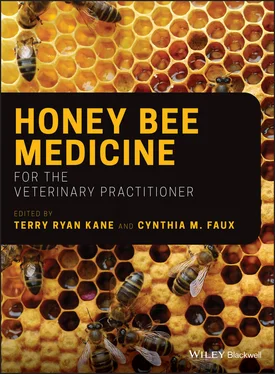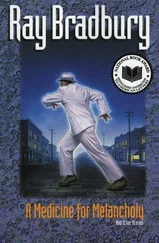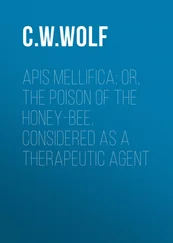Honey Bee Medicine for the Veterinary Practitioner
Здесь есть возможность читать онлайн «Honey Bee Medicine for the Veterinary Practitioner» — ознакомительный отрывок электронной книги совершенно бесплатно, а после прочтения отрывка купить полную версию. В некоторых случаях можно слушать аудио, скачать через торрент в формате fb2 и присутствует краткое содержание. Жанр: unrecognised, на английском языке. Описание произведения, (предисловие) а так же отзывы посетителей доступны на портале библиотеки ЛибКат.
- Название:Honey Bee Medicine for the Veterinary Practitioner
- Автор:
- Жанр:
- Год:неизвестен
- ISBN:нет данных
- Рейтинг книги:4 / 5. Голосов: 1
-
Избранное:Добавить в избранное
- Отзывы:
-
Ваша оценка:
- 80
- 1
- 2
- 3
- 4
- 5
Honey Bee Medicine for the Veterinary Practitioner: краткое содержание, описание и аннотация
Предлагаем к чтению аннотацию, описание, краткое содержание или предисловие (зависит от того, что написал сам автор книги «Honey Bee Medicine for the Veterinary Practitioner»). Если вы не нашли необходимую информацию о книге — напишите в комментариях, мы постараемся отыскать её.
Honey Bee Medicine
for the Veterinary Practitioner
The book covers a wide range of topics including basic husbandry, equipment and safety, anatomy, genetics, the diagnosis and management of disease. It also includes up to date information on
and other bee pests, introduces honey bee pharmacology and toxicology, and addresses native bee ecology. This new resource:
Offers a guide to veterinary care of honey bees Provides information on basic husbandry, examination techniques, nutrition, and more Discusses how to successfully handle questions and ‘hive calls’ Includes helpful photographs, line drawings, tables, and graphs Written for veterinary practitioners, veterinary students, veterinary technicians, scientists, and apiarists,
is a comprehensive and practical book on honey bee health.
Honey Bee Medicine for the Veterinary Practitioner — читать онлайн ознакомительный отрывок
Ниже представлен текст книги, разбитый по страницам. Система сохранения места последней прочитанной страницы, позволяет с удобством читать онлайн бесплатно книгу «Honey Bee Medicine for the Veterinary Practitioner», без необходимости каждый раз заново искать на чём Вы остановились. Поставьте закладку, и сможете в любой момент перейти на страницу, на которой закончили чтение.
Интервал:
Закладка:
4 Chapter 10Table 10.1 Aqueous solubility and lipophilicity of selected substances.Table 10.2 Substrates, inducers, and inhibitors of CYP 450 families in Apis me ...Table 10.3 Known disruptors of ABC‐transporters.Table 10.4 Chemical combinations with known toxicity in Apis mellifera .Table 10.5 Mechanisms of action of selected acaricides.Table 10.6 Maximum tolerances of US EPA registered miticides in honey and wax...
5 Chapter 11Table 11.1 Standardized hive body and frame dimensions found in the U.S.
6 Chapter 12Table 12.1 Examples of different types of beekeeping operations.
7 Chapter 20Table 20.1 The detection of mites in key countries around the world.Table 20.2 Summary of methods for mite monitoring.Table 20.3 Miticides approved by the U.S. Environmental Protection Agency for...Table 20.4 Putative mite‐resistance traits identified in different bee popula...
8 Chapter 22Table 22.1 Observable colony signs of bacterial disease.
9 Chapter 25Table 25.1 Example pests and pesticides, bee toxicity and label language.
10 Chapter 29Table 29.1 Simple table for queen rearing.
List of Illustrations
1 Chapter 1 Figure 1.1 Gathering honey , a beekeeping scene from the Tomb of Rekhmire. Eg... Figure 1.2 Grooming, or mite‐chewing, is a heritable trait in which honey be... Figure 1.3 Hygienic behavior or Varroa Sensitive Hygiene (VSH), is a form of... Figure 1.4 An illustration comparing the structure and organization of a hon... Figure 1.5 A research station beside the Shindagin Hollow State Forest in up... Figure 1.6 A month‐long comparison of temperatures (°C) inside a thin‐walled... Figure 1.7 Polyandry, or the multiple matings of a queen with drones from di... Figure 1.8 Bait hives are small nest boxes that are filled with empty comb a...
2 Chapter 2 Figure 2.1 Charles Darwin marveled at the superorganism. Recognizing the rem... Figure 2.2 Trophyllaxis, or the transfer of food from bee to bee, augments d... Figure 2.3 Allogrooming, or the grooming of one bee by another nestmate, is ... Figure 2.4 Tree saps or resins are collected from leaf buds and packed onto ...
3 Chapter 3 Figure 3.1 A photograph showing the three members of the honey bee hive – dr... Figure 3.2 External anatomy of the honey bee. Figure 3.3 Magnified view of a honey bee compound eye. The hexagonal shape o... Figure 3.4 The three ocelli are indicated by the small arrows. Figure 3.5 Closeup of a honey bee antenna, showing the segments. Figure 3.6 Wing hooklets, greatly magnified. Figure 3.7 (a, b) Magnified view of the corbicula (pollen basket) on the lat... Figure 3.8 Honey bee foraging on prairie spiderwort Tradescantia occidentali ... Figure 3.9 Antenna cleaner. Figure 3.10 Stinger of a worker honey bee. The queen's is barbless. Figure 3.11 Circulatory and respiratory system. Figure 3.12 Ventral nerve cord of the honey bee, shown in purple. Figure 3.13 Digestive system. Figure 3.14 Overview of the glands of the honey bee. The presence or absence... Figure 3.15 Wax scales emerging from the wax glands. Figure 3.16 Ovary of a laying queen. Individual ovarioles can be observed wi...
4 Chapter 4 Figure 4.1 Comparative anatomy of the vertebrate equine (a) with the inverte... Figure 4.2 Physical communication in the honey bee using the Waggle Dance. T... Figure 4.3 Life inside a honey bee hive is complex with many work activities... Figure 4.4 A colony of honey bees survives in large part because of the pres...
5 Chapter 5 Figure 5.1 The queen functions not only as the ovary of the honey bee supero... Figure 5.2 Whenever a “good” queen pauses on the comb, an ad hoc group of ad... Figure 5.3 A well‐fed queen is an egg‐laying machine, capable of producing a... Figure 5.4 To the untrained eye, virgin queens are difficult to spot. Look f... Figure 5.5 The leading edge of a “drone comet” chasing a “virgin” queen. At ... Figure 5.6 A freshly‐returned no‐longer‐a‐virgin exhibiting “mating sign” – ... Figure 5.7 Typically 10–14 days after emergence (dependent upon weather), a ... Figure 5.8 A histogram of colony performance (weight gain) of 35 colonies, s... Figure 5.9 Preconstructed natural “queen cups.” It is not unusual to see the... Figure 5.10 A typical supersedure cell. Supersedure cells are generally foun... Figure 5.11 A dissected supersedure cell after emergence, showing that the e... Figure 5.12 Two laying queens on the same comb face (the lower one is a bit ... Figure 5.13 Shaking bees through a sieve box to recover any queens. This is ... Figure 5.14 The thorax of a queen (center) or drone (lower right) is too bro... Figure 5.15 This aged queen (note the well‐polished thorax) became a “drone ... Figure 5.16 Typical queen cells, some sealed, some in development, along the... Figure 5.17 Typical swarm cells along the bottom bar of the upper brood cham... Figure 5.18 Bottom view of swarm cells prior to sealing. Note the huge amoun... Figure 5.19 An emerged queen cell, indicating that the colony has recently s... Figure 5.20 A sharp‐eyed vet can really impress a beekeeper when they walk u... Figure 5.21 An aged or damaged queen may not be able to fly far, and may lan... Figure 5.22 A beekeeper about to shake a low‐hanging swarm into an empty box... Figure 5.23 The author has too many times observed a novice beekeeper inadve... Figure 5.24 Typical emergency queen cells at about a day after initiation, s... Figure 5.25 Typical eggs from laying workers. Unlike those laid by a queen (... Figure 5.26 A nice egg‐laying pattern by a queen – each egg centered in its ... Figure 5.27 Raised drone cells scattered among worker cells, as opposed to g... Figure 5.28 Drone cells are normally built in discrete patches, rather than ... Figure 5.29 A brood frame with scattered drone cells. In this case, there we... Figure 5.30 A case of a young queen commencing egg laying without having mat... Figure 5.31 A solid brood pattern, indicating an excellent queen, and a well... Figure 5.32 An example of “spotty brood.” Although beekeepers often blame th... Figure 5.33 The queen is most often to be found on a brood frame, and not su... Figure 5.34 Queens are typically held by both wings. If you only get one win... Figure 5.35 Even when gently handled, some queens may play possum. Do not le... Figure 5.36 Placing a queen headfirst into a queen cage for her own protecti... Figure 5.37 Bee behavior indicating acceptance of a caged queen. The bees wi... Figure 5.38 Bees that are not accepting a queen. These workers are attemptin... Figure 5.39 The round opening at the bottom of the inserted queen cell indic...
6 Chapter 6Figure 6.1 Lineages of bees: Apis mellifera scutellata Lepeletier, the Afric...Figure 6.2 Examples of the Carniolan Bee.Figure 6.3 An example of a Caucasian Queen.Figure 6.4 An Italian bee.Figure 6.5 An Africanized honey bee apiary in Bolivia. Note the stone walled...Figure 6.6 A frame of brood from an Africanized hive. Note the extensive bro...Figure 6.7 Working defensive bees in Bolivia.
7 Chapter 7Figure 7.1 Cladogram depicting the phylogenetic relationships between “sphec...Figure 7.2 Structures for pollen transport in different bee species. (a) The...Figure 7.3 Diversity of natural history traits among solitary non‐ Apis bee s...
8 Chapter 8Figure 8.1 Relationship between pollen availability and colony population dy...Figure 8.2 Age structure of a colony over a year in Manitoba, Canada. Number...Figure 8.3 Growth rates of both package and overwintered colonies, generally...Figure 8.4 Comparison between the weight gain of package bees vs. that of a ...Figure 8.5 The availability of trace elements in the soil varies greatly acr...Figure 8.6 Pollen foragers pack their loads into empty cells near young larv...Figure 8.7 The degree of distension of the bees' abdomens is a quick field s...Figure 8.8 This colony is enjoying a surplus of nectar and pollen, as eviden...Figure 8.9 Wax flakes produced by the eight wax glands on a worker's abdomen...Figure 8.10 The presence of “white wax” indicates to the beekeeper that a st...Figure 8.11 The above is an example of a colony suffering from dysentery, re...Figure 8.12 It requires microscopic examination of a bee's diluted gut conte...Figure 8.13 Honey bees are not native to California, and thus did not evolve...Figure 8.14 Bees collecting sawdust on a sunny morning in January, when ther...Figure 8.15 Almond pollen and nectar both contain bee‐toxic amygdalin, yet n...Figure 8.16 Typical layers of pollen from different returning foragers. The ...Figure 8.17 Beebread exhibiting a range of colors generally guarantees a col...Figure 8.18 Plants of the sunflower family, such as Dandelion, although very...Figure 8.19 The owner of this prune orchard seeded mustard, knowing that bee...Figure 8.20 Although is colony is packed with what looks like pollen, the or...Figure 8.21 The above beebread at 400x magnification. The roundish grains ar...Figure 8.22 Fat bodies in the abdomen of a forager (left) and nurse or winte...Figure 8.23 Nurse bees sharing jelly via trophallaxis. Only colonies with we...Figure 8.24 A queen cell opened to show a second‐instar larva in a queen cel...Figure 8.25 The abdomen of the returning forager at the lower left is disten...Figure 8.26 This colony is said to be “shaking nectar,” meaning it is bringi...Figure 8.27 A typical central brood comb from the center of a brood chamber ...Figure 8.28 The interface above tells you most all you need to know about th...Figure 8.29 Pollen and nectar are initially placed throughout the brood area...Figure 8.30 There are two dynamic interfaces with which one can assess the s...Figure 8.31 Note the unripened shiny nectar surrounding the brood, the abund...Figure 8.32 A colony living hand‐to‐mouth, as indicated by the small amount ...Figure 8.33 A frame of healthy brood with a broad ring of pollen stored on t...Figure 8.34 Decent larval survivorship is indicated by an even‐age grouping ...Figure 8.35 The above would generally be considered to be a “solid brood pat...Figure 8.36 Colonies often build drone cells in the space between the two br...Figure 8.37 This rapidly growing colony was hit by a snowstorm during its sp...Figure 8.38 In the final stages of starvation due to lack of honey, the work...Figure 8.39 Typical “spotty brood” during a pollen dearth after the main hon...Figure 8.40 First‐ and second‐instar larvae “swimmin' in jelly.” Nurse bees ...Figure 8.41 Adequately‐fed larvae. Notice the shimmering reflection of jelly...Figure 8.42 The larvae above are being fed far less than optimally. Note the...Figure 8.43 Another example of adequately‐fed larvae. Although the cells are...Figure 8.44 Nutritional stress. The upper cells contain eggs, the lower two ...Figure 8.45 Emergency feeding of colonies during the spring buildup can make...Figure 8.46 The author's sons feeding chunks of pollen sub in an almond orch...Figure 8.47 Testing a hive for weight in order to assess the adequacy of win...Figure 8.48 Colonies being fed sugar syrup during a nectar dearth.Figure 8.49 Close‐up of supplemental sugar feeding jars on colonies. Note th...Figure 8.50 Commercial pollen substitutes (“pollen subs”) in patty form. Hig...Figure 8.51 Comparison of colony buildup during an extended natural pollen d...Figure 8.52 A strong, hungry colony can easily consume a 3‐lb pollen sub pat...Figure 8.53 Commercial pollen sub fed in paper‐sandwiched patty form. Note t...Figure 8.54 As opposed to feeding paper‐covered preformed patties, many comm...Figure 8.55 Feeding chunks of pollen sub in the rain. The author's sons are ...Figure 8.56 Pollen sub fed outside the hive in dry powder form is eagerly ga...Figure 8.57 The “core” gut bacteria exhibit rather strict niche fidelity wit...
Читать дальшеИнтервал:
Закладка:
Похожие книги на «Honey Bee Medicine for the Veterinary Practitioner»
Представляем Вашему вниманию похожие книги на «Honey Bee Medicine for the Veterinary Practitioner» списком для выбора. Мы отобрали схожую по названию и смыслу литературу в надежде предоставить читателям больше вариантов отыскать новые, интересные, ещё непрочитанные произведения.
Обсуждение, отзывы о книге «Honey Bee Medicine for the Veterinary Practitioner» и просто собственные мнения читателей. Оставьте ваши комментарии, напишите, что Вы думаете о произведении, его смысле или главных героях. Укажите что конкретно понравилось, а что нет, и почему Вы так считаете.












